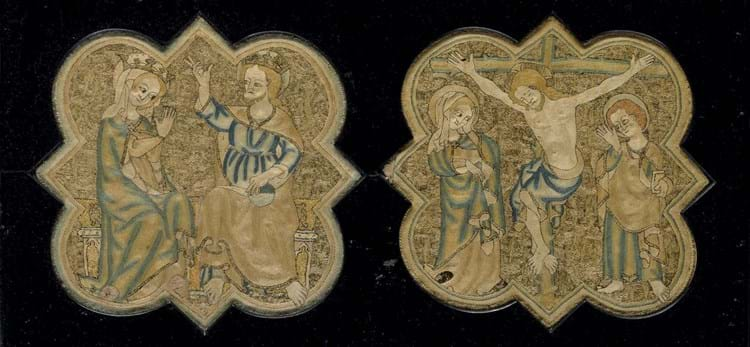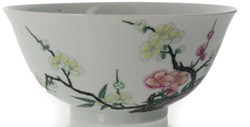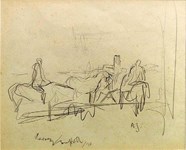The 18in (25cm) square panels of English medieval embroidery c.1320-30, framed together, were estimated at £20,000-30,000.
The phrase Opus Anglicanum (literally ‘work of the English’) was used in continental medieval sources to describe the highly prized gold work embroidery produced by professional embroiderers in London and other regional centres as well as members of the monastic community.
The technically exacting craft was a casualty of the Black Death in the 14th century and many examples were subsequently lost during the Reformation.
These two panels, of barbed quatrefoil format, are finely worked in silk and metal-thread, one depicting the Crucifixion, with Christ flanked by the Virgin and St John, the other showing the Coronation of the Virgin. The embroidery is exceptionally fine – for example the extraordinary skin of the figures is worked in delicate swirls to give the impression of movement – and both are in good condition. The colours, although faded, still showed a range of delicate greens, blues and yellows.
As gleaned from the exhibition Opus Anglicanum: Masterpieces of English Medieval Embroidery at the Victoria and Albert Museum in 2016-17, most of the extant works survived in Europe or were discreetly preserved by Catholic families in Britain.
The panels offered at Sotheby’s in London on December 11 had come from one of Britain’s great Regency homes, Spetchley Park in Wychavon.
Henry Berkeley, a direct descendant of Robert Berkeley (1764-1845) who built the house in Bath stone on family lands in 1811, inherited the property two years ago and plans to move back to the estate with his young family. The £3.1m sale of some 750 objects will raise funds for renovation with these panels providing a very welcome boost of £290,000 (£362,500 including 25% buyer’s premium).
It is unknown when the panels joined the family collection but the Berkeleys were notable collectors and antiquarians. They augmented the furnishings at Spetchley through foreign travel and purchases at some of the great 19th century house sales including Lord Berwick’s historic sale at Attingham in 1827, William Beckford’s Lansdown Hill sale in 1841 and the Buckingham and Chandos sale at Stowe in 1848.















